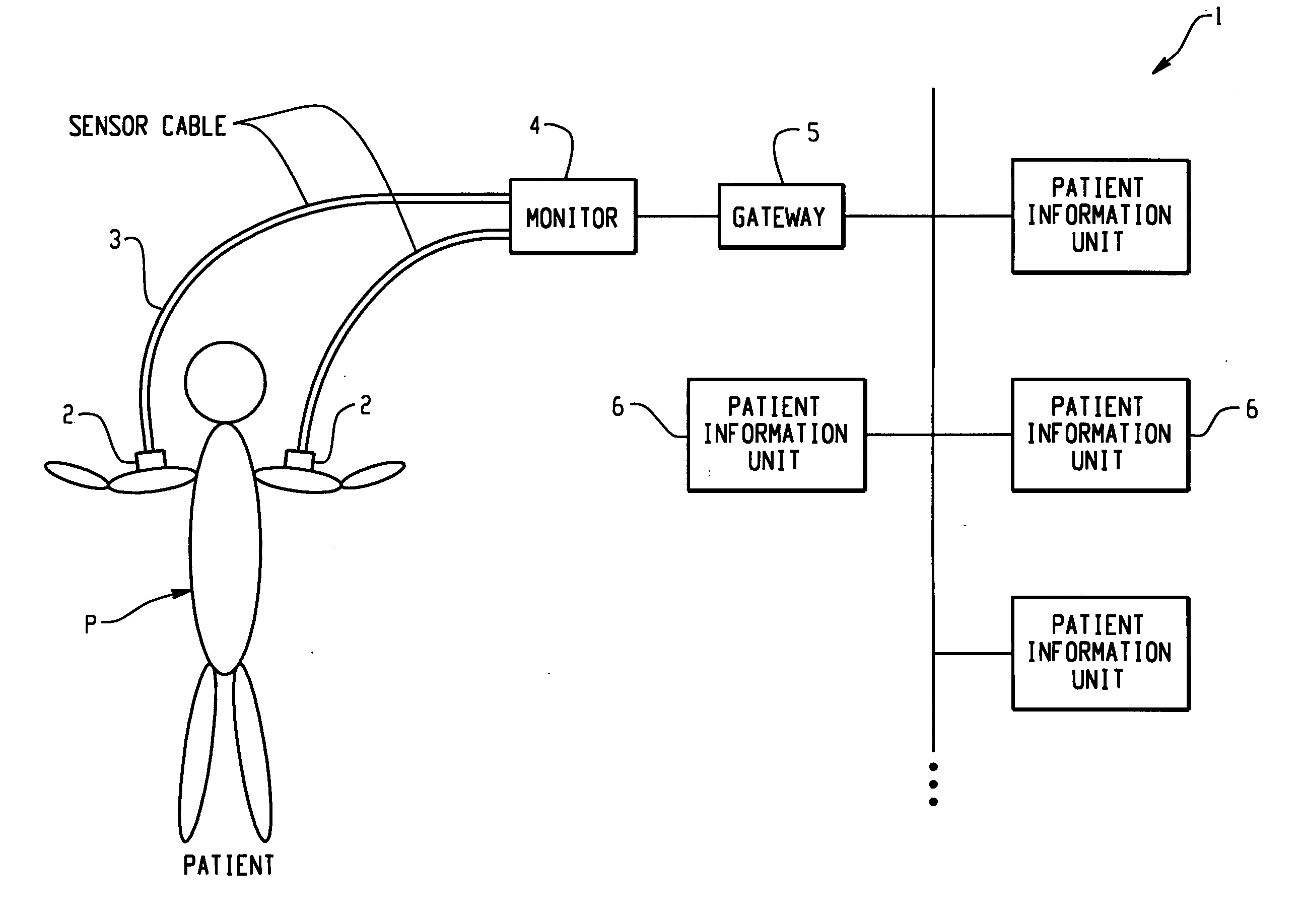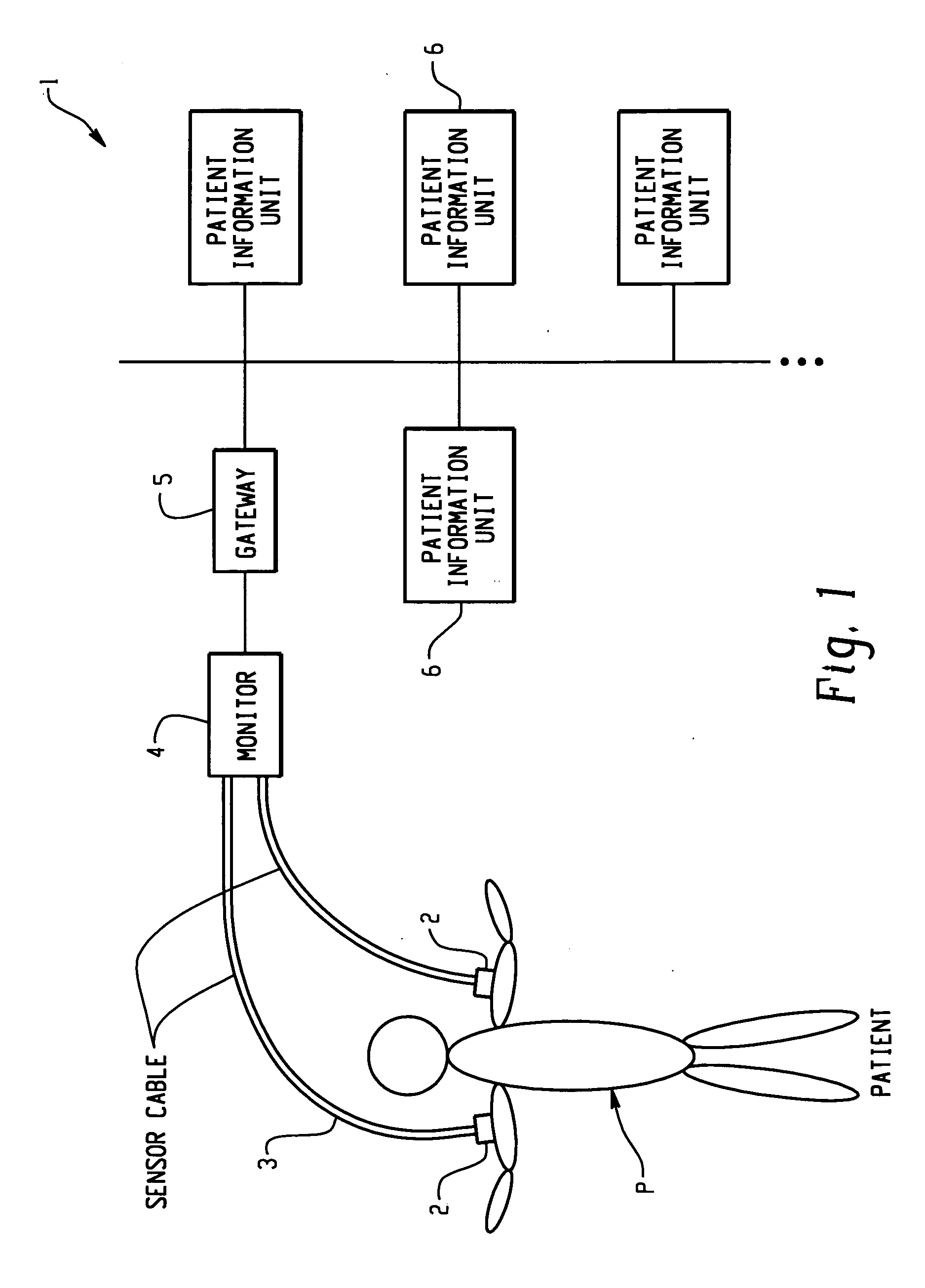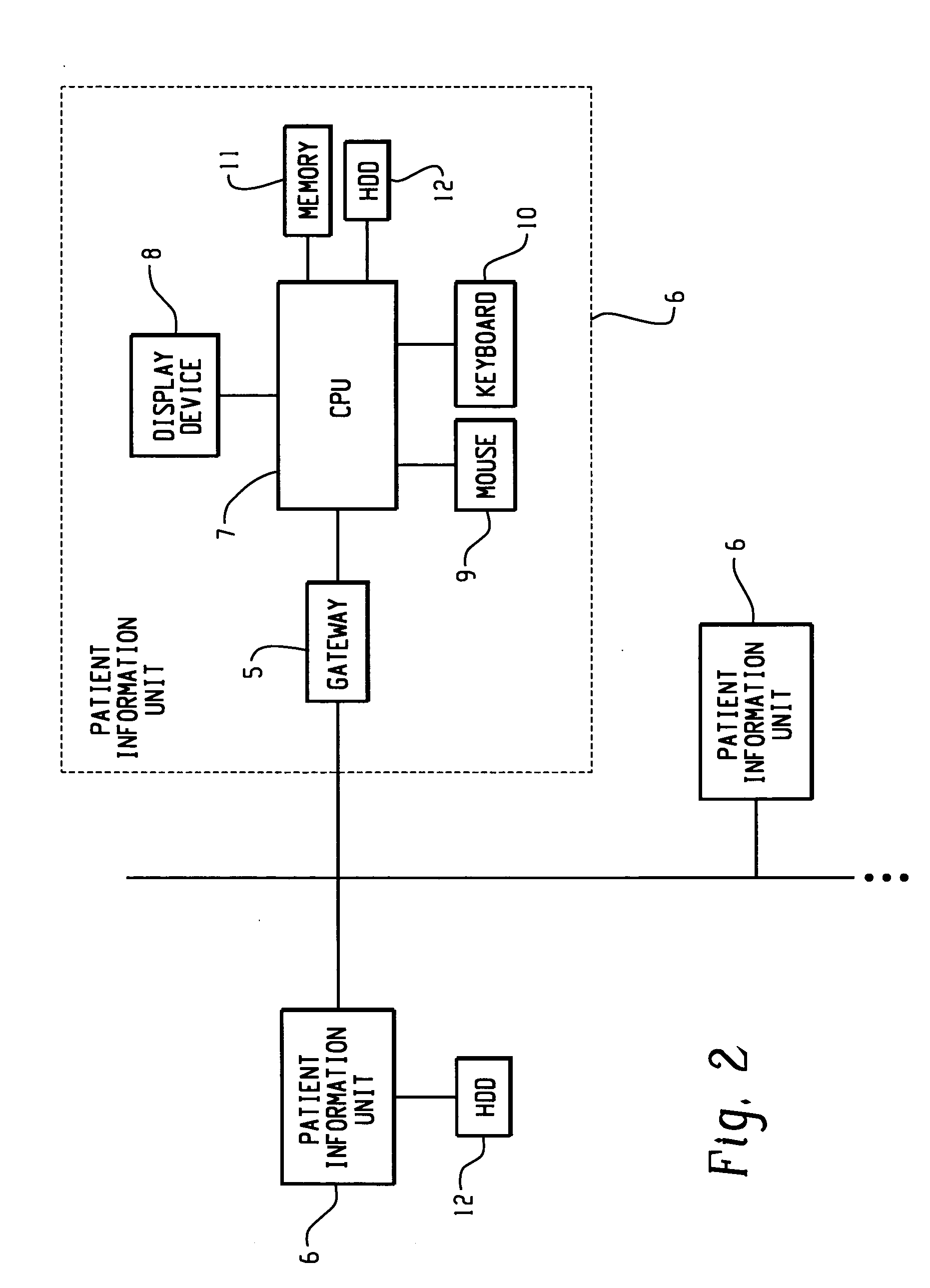Patient information management apparatus and method
a patient information and patient technology, applied in the field of patient information management system, can solve the problems of insatiable information about the time schedule of injection, user's inability to exchange the display mode of a patient, and physician's inability to inform a nurse of what precautions to take, so as to facilitate user checking
- Summary
- Abstract
- Description
- Claims
- Application Information
AI Technical Summary
Benefits of technology
Problems solved by technology
Method used
Image
Examples
Embodiment Construction
[0046] Preferred embodiments of the present invention will be described with reference to attached figures.
[0047]FIG. 1 is a block diagram for outlining a patient information management system 1 (information management system) of the present information. Various sensors 2 are applied on the body of a patient P for monitoring the condition of the patient. Each sensor 2 is connected via a sensor cable to a monitor 4. The monitor 4 receives signals from the sensors 2, and delivers them as patient information to the system. Each output cable from the monitor 4 is connected via a gateway 5 to a network system comprising plural patient information management units 6 (information management unit). The information management system 1 is based on a network of the information units 6. Patient information transmitted from the above sensors is received and managed by a information management unit 6. Usually, one of the information management units 6 serves as a server, and the rest as clients,...
PUM
 Login to View More
Login to View More Abstract
Description
Claims
Application Information
 Login to View More
Login to View More - R&D
- Intellectual Property
- Life Sciences
- Materials
- Tech Scout
- Unparalleled Data Quality
- Higher Quality Content
- 60% Fewer Hallucinations
Browse by: Latest US Patents, China's latest patents, Technical Efficacy Thesaurus, Application Domain, Technology Topic, Popular Technical Reports.
© 2025 PatSnap. All rights reserved.Legal|Privacy policy|Modern Slavery Act Transparency Statement|Sitemap|About US| Contact US: help@patsnap.com



